Previous Post | Blog Home
| Next Post ›
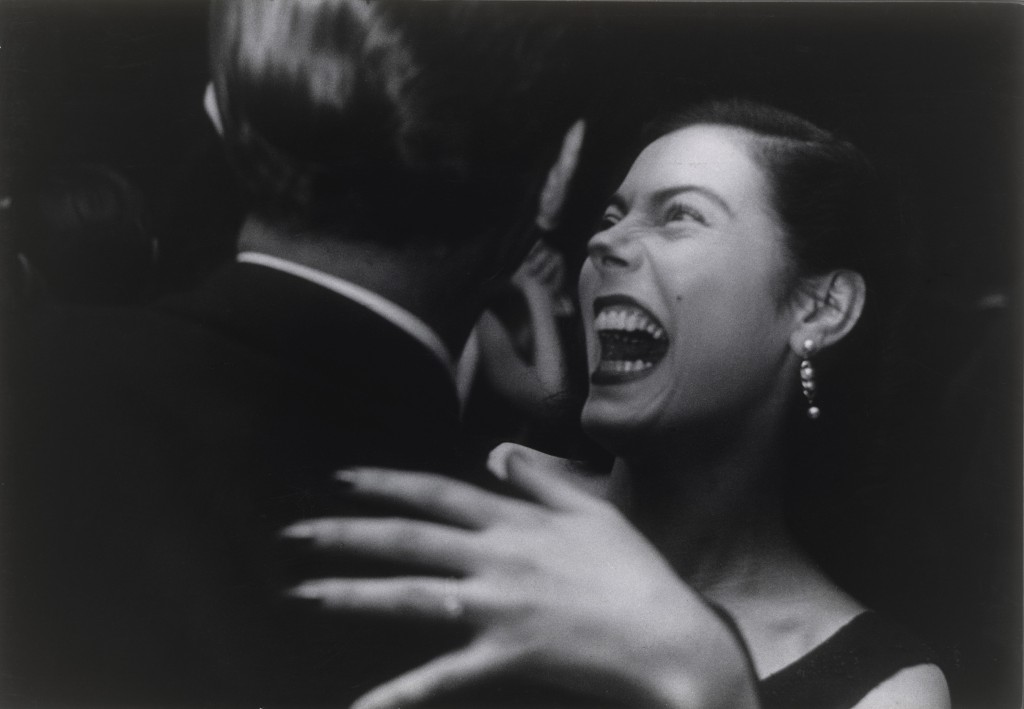
Scroll down for a slide show of photographs by Winogrand, with
audio interviews conducted during the March 6 opening of his posthumous
retrospective at the San Francisco Museum of Modern Art.
Garry Winogrand (1928–84) was the first photographer to realize how much juicy comedy could be squeezed out of New York’s art and literary scenes. During the late sixties, early seventies, when he would arrive with his Leica at a Museum of Modern Art opening or a costume ball at the Metropolitan Museum of Art or at Norman Mailer’s fiftieth birthday party, he would sometimes announce to the crowd, “I’m here,” as if an event did not officially begin until he was there to record it.
He was more right than even he might have guessed. Were it not for his mordant photos of those ragged, sybaritic evenings, best represented in the 1977 book Public Relations, it would be hard to imagine them. Mad Men and other dramatic re-creations tidy up the social anarchy of those years; Winogrand’s camera didn’t. From the haphazard lines of men and women awkwardly at ease, uniformed in black tie or a too-tight harem top, heads wreathed with cigarette smoke and piles of teased hair, ghostly moues cut with rictus smiles and rows of perfect teeth, he fashioned dark instants of sublime lunacy. Everyone and everything seems false or imbecilic in his party pictures, his eye exposing secret acts of disintegration within rituals of supposed public glee.
Behind his mockery of the self-satisfied and the strivers, though, is a winking acknowledgement that anyone can appear stricken when blasted by a flash at 1/125 of a second. Photography turns one and all into fools, including—especially—artists like himself, eager to hunt life and trap as many of its fleeting variables as possible inside a 35 mm frame but doomed to return empty-handed far more often than not.
There wasn’t much foolishness on display at the opening for the Winogrand retrospective on March 6, at the San Francisco Museum of Modern Art. Without the boisterous guest of honor to enliven the goings-on, the event was instead a sedate reunion of his many pals and colleagues, most of them now sixty or older but still with vivid memories of him.
Lee Friedlander, Jay Maisel, Paul McDonough, Thomas Roma, Mitch Epstein, and Peter MacGill flew in from New York City; Tod Papageorge from Connecticut; Richard Benson from Rhode Island; Anthony Hernandez from Los Angeles; Geoff Winningham from Houston. San Francisco figures who had known Winogrand here or there (Henry Wessel Jr., Linda Conner, Leland Rice, Jeffrey Fraenkel) mingled with younger admirers who had never met him (Paul Graham, Sasha Rudensky, Doug Rickard, Catherine Wagner, Todd Hido, Michael Jang). Curators who had worked with him at MoMA (Susan Kismaric and Peter Galassi) attended along with the curators overseeing this posthumous traveling show (Sandra Phillips of SFMoMA and Sarah Greenough of the National Gallery).
The evening’s ringleader was photographer and critic Leo Rubinfien. Organizer of the retrospective and author of the main catalogue essay, he has divided the work into three chronological parts—“Down from the Bronx,” “A Student of America,” “Boom and Bust”—and, with Kismaric, unearthed many never-before-exhibited prints, some from the hundreds of thousands of frames Winogrand exposed but never printed toward the end of his life, when he was living in Los Angeles and shooting madly, at times about fifteen hundred rolls a year.
A central raison d’être for the exhibition is the chance for the public to assess this “late work” (circa 1975–83), much of it done in Southern California, which was slighted by curator John Szarkowski in his selections for the 1988 retrospective at MoMA. In a beautiful fifteen-minute talk in an auditorium the night of the opening, Rubinfien expressed his belief that Los Angeles should have been the “natural culmination” of Winogrand’s project to document the fraught history of his native land, the city then being, in Rubinfien’s words, “the headquarters in America of sprawling vulgarity, the showroom of freedom where it distresses us the most.” Visitors can judge for themselves if, as Szarkowski thought, the photographer lost his way after he left New York in the early seventies, or if, as Rubinfien thinks, he reset his horizons and deepened his pessimism about America when he moved to the West.
“I was so gauche I didn’t even know what gauche meant,” Winogrand once said, commenting on his Bronx upbringing as the bright, unruly son of a couple who worked in the garment industry.
Stories about Winogrand emphasize common themes: his energy and sarcastic wit; bottomless appetites for coffee and talk; stressful relationships with women; casual attitude toward debt; bawdy humor; love of companionship; sophisticated analysis of the problems confronting any serious photographer, at least as he saw them; and brutal honesty.
In a party after the opening, at a room in the St. Regis Hotel next to the museum, there were toasts to and from Rubinfien and much discussion about the missing guest of honor. Roma remembered looking at Winogrand’s photograph of a bear in the Central Park Zoo and thinking, “I’ve finally got it. I didn’t need to go to an exotic place to photograph. I can stay here.”
Epstein, a student of Winogrand’s who was among the first to move successfully into color, believes that Winogrand was “absolutely fascinated by this other medium that he wasn’t quite ready to contend with.” Rubinfien was another young protégé and described him as a “bull of a man,” old enough to have been his father.
Maisel, a successful commercial photographer, was the target of continual barbs from Winogrand, who told him repeatedly that his pictures “lacked the chaos of life.” “Garry could be a bully,” he said. “I finally asked him, ‘Do your pictures have the chaos of life?’ He said, ‘Yes.’ I said, ‘Okay, then why do my pictures have to?’” (It is a testament to Maisel’s decency that they stayed friends. In 1955 he introduced Winogrand to Friedlander, another lifelong comradeship.)
Perhaps if Winogrand had not been so laughably oversize, both in talent and flaws, his friends might have been less forgiving of his sometimes oppressive boorishness. Friedlander agreed with Maisel that “Garry was never fully domesticated,” which didn’t stop him from trying married life with three different women. All of them—Eileen Adele Hale, Judith Teller, Adrienne Lubeau Winogrand—were at the opening, along with his three attractive grown children—Ethan, Laurie, and Melissa.
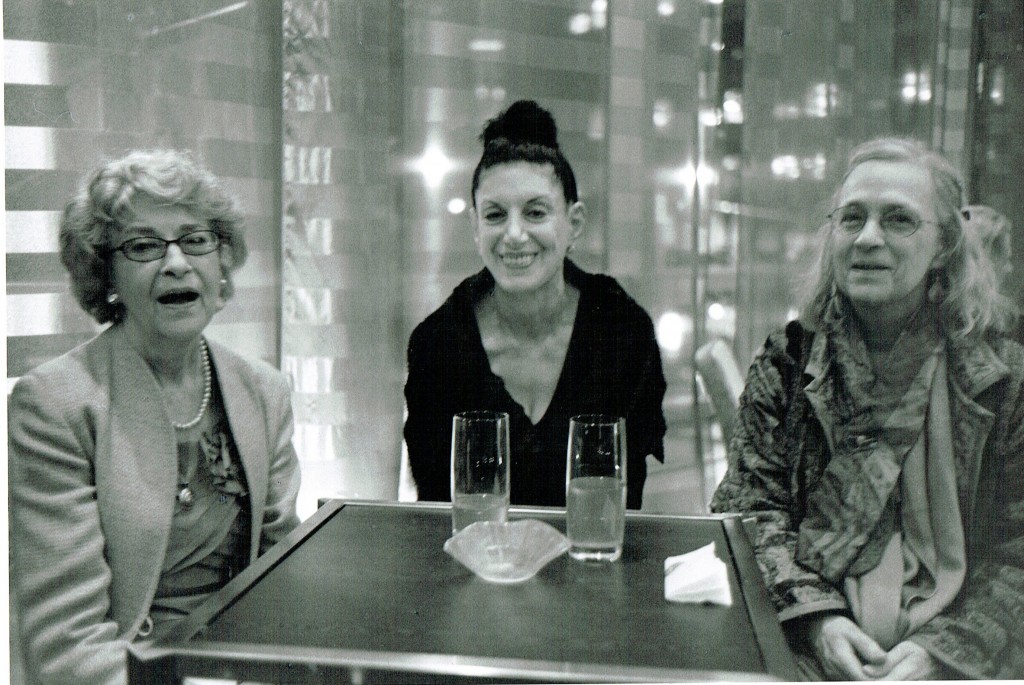
“I remember one day in the fifties, Garry announced that he had just
taken a nude of his [first] wife,” said Maisel. “I asked him if she had
objected. ‘Of course,’ he said. ‘But I told her she’d never look that
good again and one day she’d thank me.’”
One of the exhibition’s vitrines contained a scorching letter from Winogrand’s second wife, Judith Teller, that indicates what a trial home life with him must have been like: “But my analyst bill is not even relevant at this point,” she wrote in 1969. “What is extremely relevant is the money you owe the government in back taxes. Your inability to pay the rent on time. Your constantly running out of money. Your credit rating. And most of all, your flippant, irresponsible, nonsensical attitude toward all these very real problems. (‘I’ll wait till the government catches up with me. Why should I pay them any money now?’) You seem incapable of exercising your mind in any cogent way.”
In that last judgment she was dead wrong. Winogrand’s adult life was concerned to an uncanny degree with challenging himself as a photographer in an art world where few valued the issues that obsessed him. Even though what he left behind stands with the journalism of Mailer and Didion and Wolfe and Kopkind as a telling record of what it was like to be alive in those years, Winogrand was savaged by critics in the late 1970s. Greenough’s catalogue essay offers a sad recital of the pounding he took.
Looking around the opening, it was hard not to compare the people in the photographs with the crowds in the galleries. Gray-haired or balding though his friends are now, the reason for parties doesn’t change. There were still men in black tie (the ideal outfit for a photograph in monochrome) and women in slinky dresses, and the defining public gesture of the evening and our day—hunched figures of all ages staring importantly into their smart phones—suggested that, were Winogrand alive, modern America would give him plenty of material to work with.
Richard B. Woodward is an arts critic in New York. He is writing a book on photography and violence for Yale University Press.
Garry Winogrand and the Art of the Opening
May 13, 2013 | by Richard B. Woodward

Garry Winogrand, El Morocco, New York,
1955, black-and-white photograph. The Metropolitan Museum of Art, New
York, purchase, the Horace W. Goldsmith Foundation Gift, through Joyce
and Robert Menschel; © The Estate of Garry Winogrand, courtesy Fraenkel
Gallery, San Francisco.
Garry Winogrand (1928–84) was the first photographer to realize how much juicy comedy could be squeezed out of New York’s art and literary scenes. During the late sixties, early seventies, when he would arrive with his Leica at a Museum of Modern Art opening or a costume ball at the Metropolitan Museum of Art or at Norman Mailer’s fiftieth birthday party, he would sometimes announce to the crowd, “I’m here,” as if an event did not officially begin until he was there to record it.
He was more right than even he might have guessed. Were it not for his mordant photos of those ragged, sybaritic evenings, best represented in the 1977 book Public Relations, it would be hard to imagine them. Mad Men and other dramatic re-creations tidy up the social anarchy of those years; Winogrand’s camera didn’t. From the haphazard lines of men and women awkwardly at ease, uniformed in black tie or a too-tight harem top, heads wreathed with cigarette smoke and piles of teased hair, ghostly moues cut with rictus smiles and rows of perfect teeth, he fashioned dark instants of sublime lunacy. Everyone and everything seems false or imbecilic in his party pictures, his eye exposing secret acts of disintegration within rituals of supposed public glee.
Behind his mockery of the self-satisfied and the strivers, though, is a winking acknowledgement that anyone can appear stricken when blasted by a flash at 1/125 of a second. Photography turns one and all into fools, including—especially—artists like himself, eager to hunt life and trap as many of its fleeting variables as possible inside a 35 mm frame but doomed to return empty-handed far more often than not.
There wasn’t much foolishness on display at the opening for the Winogrand retrospective on March 6, at the San Francisco Museum of Modern Art. Without the boisterous guest of honor to enliven the goings-on, the event was instead a sedate reunion of his many pals and colleagues, most of them now sixty or older but still with vivid memories of him.
Lee Friedlander, Jay Maisel, Paul McDonough, Thomas Roma, Mitch Epstein, and Peter MacGill flew in from New York City; Tod Papageorge from Connecticut; Richard Benson from Rhode Island; Anthony Hernandez from Los Angeles; Geoff Winningham from Houston. San Francisco figures who had known Winogrand here or there (Henry Wessel Jr., Linda Conner, Leland Rice, Jeffrey Fraenkel) mingled with younger admirers who had never met him (Paul Graham, Sasha Rudensky, Doug Rickard, Catherine Wagner, Todd Hido, Michael Jang). Curators who had worked with him at MoMA (Susan Kismaric and Peter Galassi) attended along with the curators overseeing this posthumous traveling show (Sandra Phillips of SFMoMA and Sarah Greenough of the National Gallery).
The evening’s ringleader was photographer and critic Leo Rubinfien. Organizer of the retrospective and author of the main catalogue essay, he has divided the work into three chronological parts—“Down from the Bronx,” “A Student of America,” “Boom and Bust”—and, with Kismaric, unearthed many never-before-exhibited prints, some from the hundreds of thousands of frames Winogrand exposed but never printed toward the end of his life, when he was living in Los Angeles and shooting madly, at times about fifteen hundred rolls a year.
A central raison d’être for the exhibition is the chance for the public to assess this “late work” (circa 1975–83), much of it done in Southern California, which was slighted by curator John Szarkowski in his selections for the 1988 retrospective at MoMA. In a beautiful fifteen-minute talk in an auditorium the night of the opening, Rubinfien expressed his belief that Los Angeles should have been the “natural culmination” of Winogrand’s project to document the fraught history of his native land, the city then being, in Rubinfien’s words, “the headquarters in America of sprawling vulgarity, the showroom of freedom where it distresses us the most.” Visitors can judge for themselves if, as Szarkowski thought, the photographer lost his way after he left New York in the early seventies, or if, as Rubinfien thinks, he reset his horizons and deepened his pessimism about America when he moved to the West.
“I was so gauche I didn’t even know what gauche meant,” Winogrand once said, commenting on his Bronx upbringing as the bright, unruly son of a couple who worked in the garment industry.
Stories about Winogrand emphasize common themes: his energy and sarcastic wit; bottomless appetites for coffee and talk; stressful relationships with women; casual attitude toward debt; bawdy humor; love of companionship; sophisticated analysis of the problems confronting any serious photographer, at least as he saw them; and brutal honesty.
In a party after the opening, at a room in the St. Regis Hotel next to the museum, there were toasts to and from Rubinfien and much discussion about the missing guest of honor. Roma remembered looking at Winogrand’s photograph of a bear in the Central Park Zoo and thinking, “I’ve finally got it. I didn’t need to go to an exotic place to photograph. I can stay here.”
Epstein, a student of Winogrand’s who was among the first to move successfully into color, believes that Winogrand was “absolutely fascinated by this other medium that he wasn’t quite ready to contend with.” Rubinfien was another young protégé and described him as a “bull of a man,” old enough to have been his father.
Maisel, a successful commercial photographer, was the target of continual barbs from Winogrand, who told him repeatedly that his pictures “lacked the chaos of life.” “Garry could be a bully,” he said. “I finally asked him, ‘Do your pictures have the chaos of life?’ He said, ‘Yes.’ I said, ‘Okay, then why do my pictures have to?’” (It is a testament to Maisel’s decency that they stayed friends. In 1955 he introduced Winogrand to Friedlander, another lifelong comradeship.)
Perhaps if Winogrand had not been so laughably oversize, both in talent and flaws, his friends might have been less forgiving of his sometimes oppressive boorishness. Friedlander agreed with Maisel that “Garry was never fully domesticated,” which didn’t stop him from trying married life with three different women. All of them—Eileen Adele Hale, Judith Teller, Adrienne Lubeau Winogrand—were at the opening, along with his three attractive grown children—Ethan, Laurie, and Melissa.

Adrienne Lubeau Winogrand, Judith Teller, and Eileen Adele Hale at the opening. Photo: Paul McDonough.
One of the exhibition’s vitrines contained a scorching letter from Winogrand’s second wife, Judith Teller, that indicates what a trial home life with him must have been like: “But my analyst bill is not even relevant at this point,” she wrote in 1969. “What is extremely relevant is the money you owe the government in back taxes. Your inability to pay the rent on time. Your constantly running out of money. Your credit rating. And most of all, your flippant, irresponsible, nonsensical attitude toward all these very real problems. (‘I’ll wait till the government catches up with me. Why should I pay them any money now?’) You seem incapable of exercising your mind in any cogent way.”
In that last judgment she was dead wrong. Winogrand’s adult life was concerned to an uncanny degree with challenging himself as a photographer in an art world where few valued the issues that obsessed him. Even though what he left behind stands with the journalism of Mailer and Didion and Wolfe and Kopkind as a telling record of what it was like to be alive in those years, Winogrand was savaged by critics in the late 1970s. Greenough’s catalogue essay offers a sad recital of the pounding he took.
Looking around the opening, it was hard not to compare the people in the photographs with the crowds in the galleries. Gray-haired or balding though his friends are now, the reason for parties doesn’t change. There were still men in black tie (the ideal outfit for a photograph in monochrome) and women in slinky dresses, and the defining public gesture of the evening and our day—hunched figures of all ages staring importantly into their smart phones—suggested that, were Winogrand alive, modern America would give him plenty of material to work with.
Richard B. Woodward is an arts critic in New York. He is writing a book on photography and violence for Yale University Press.
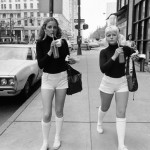
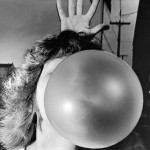

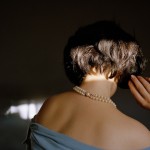
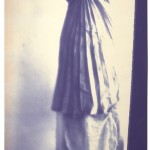

No comments:
Post a Comment